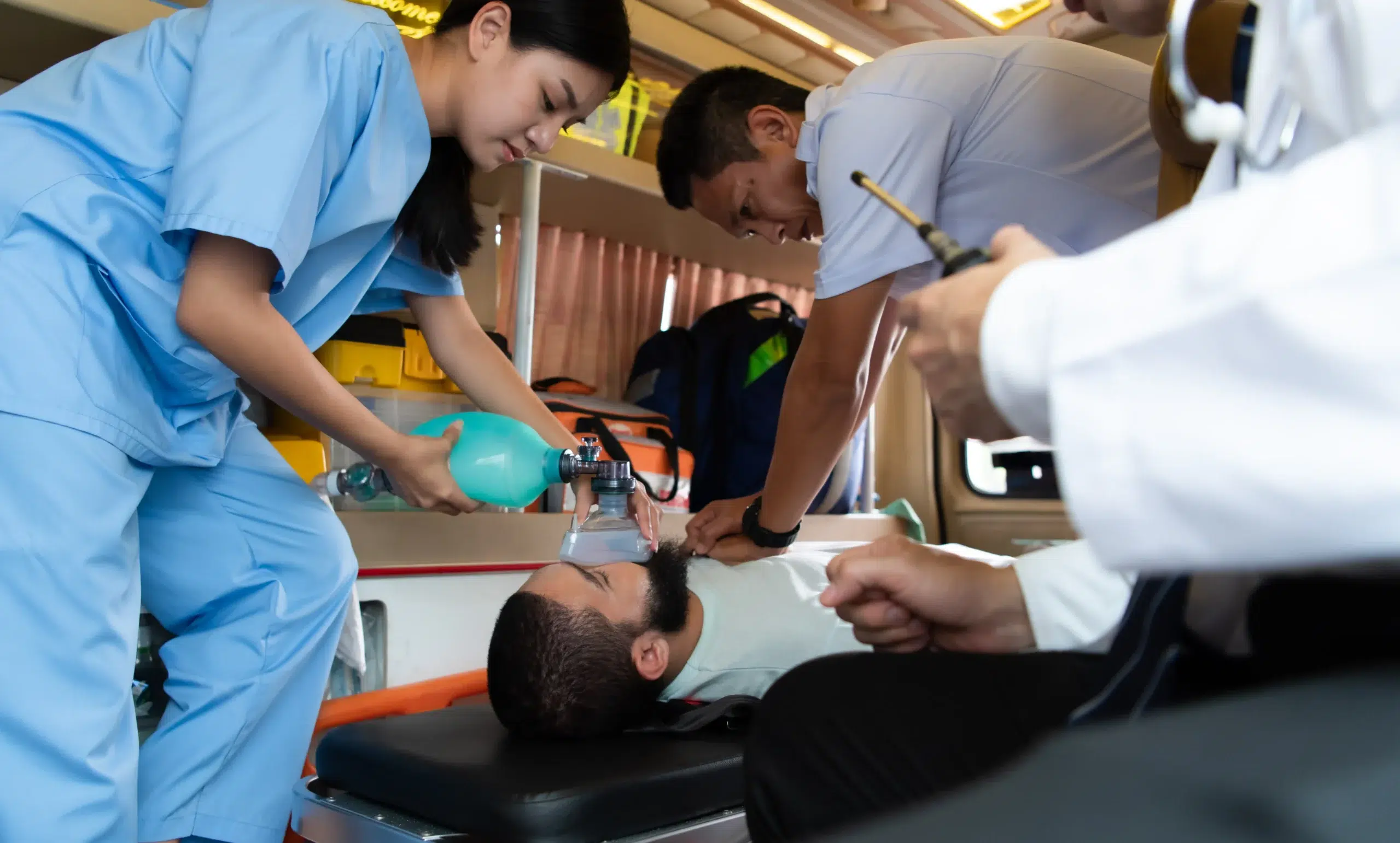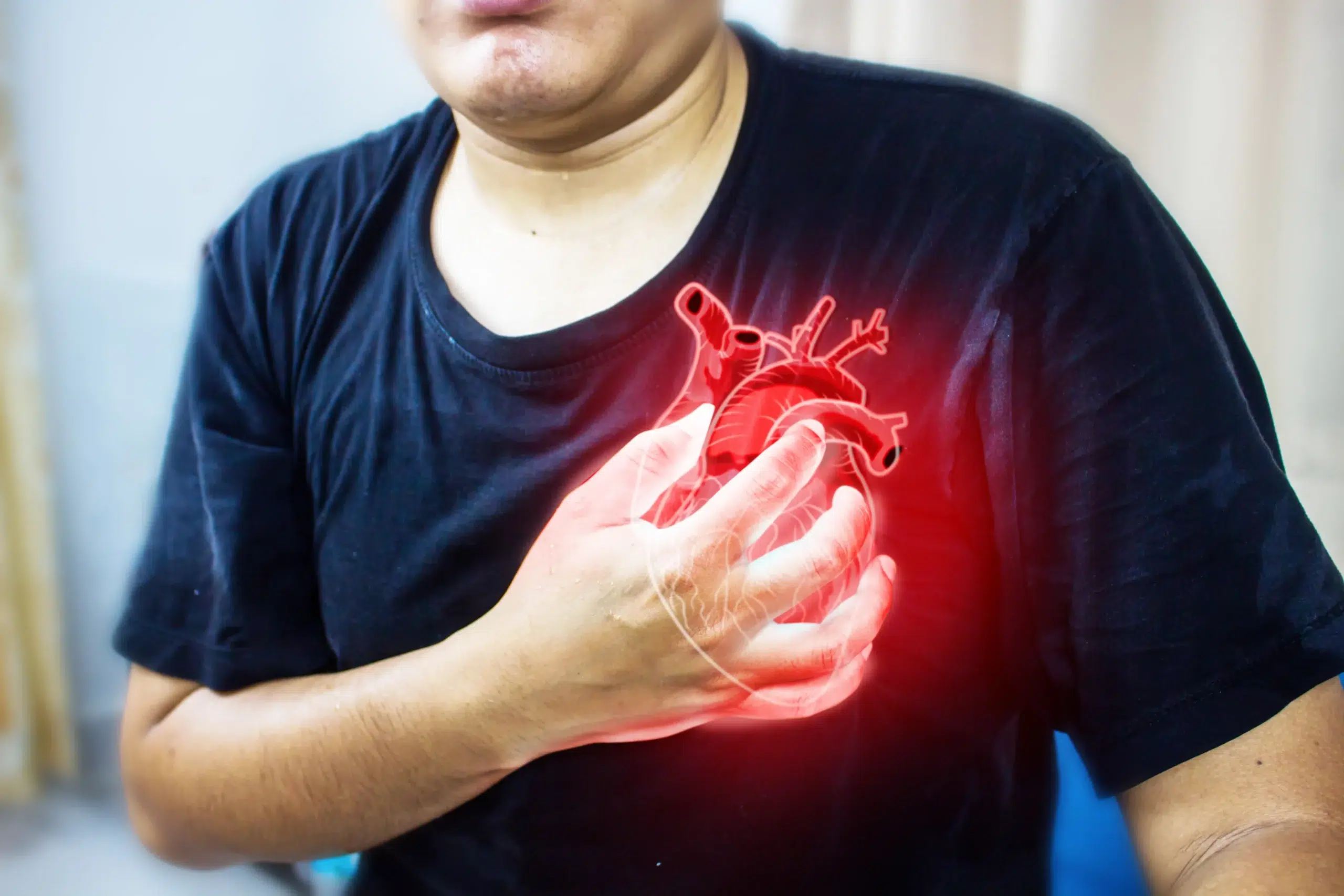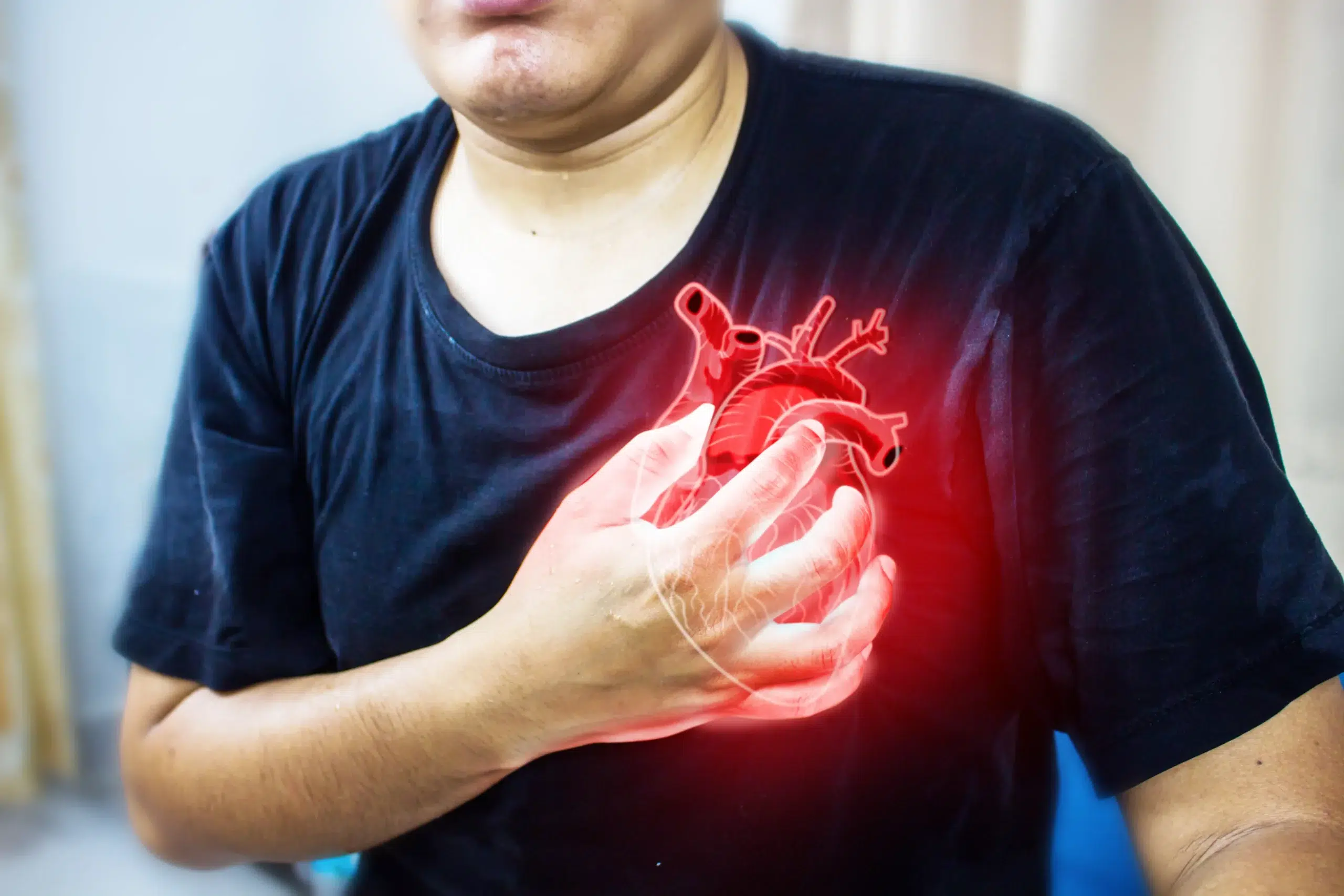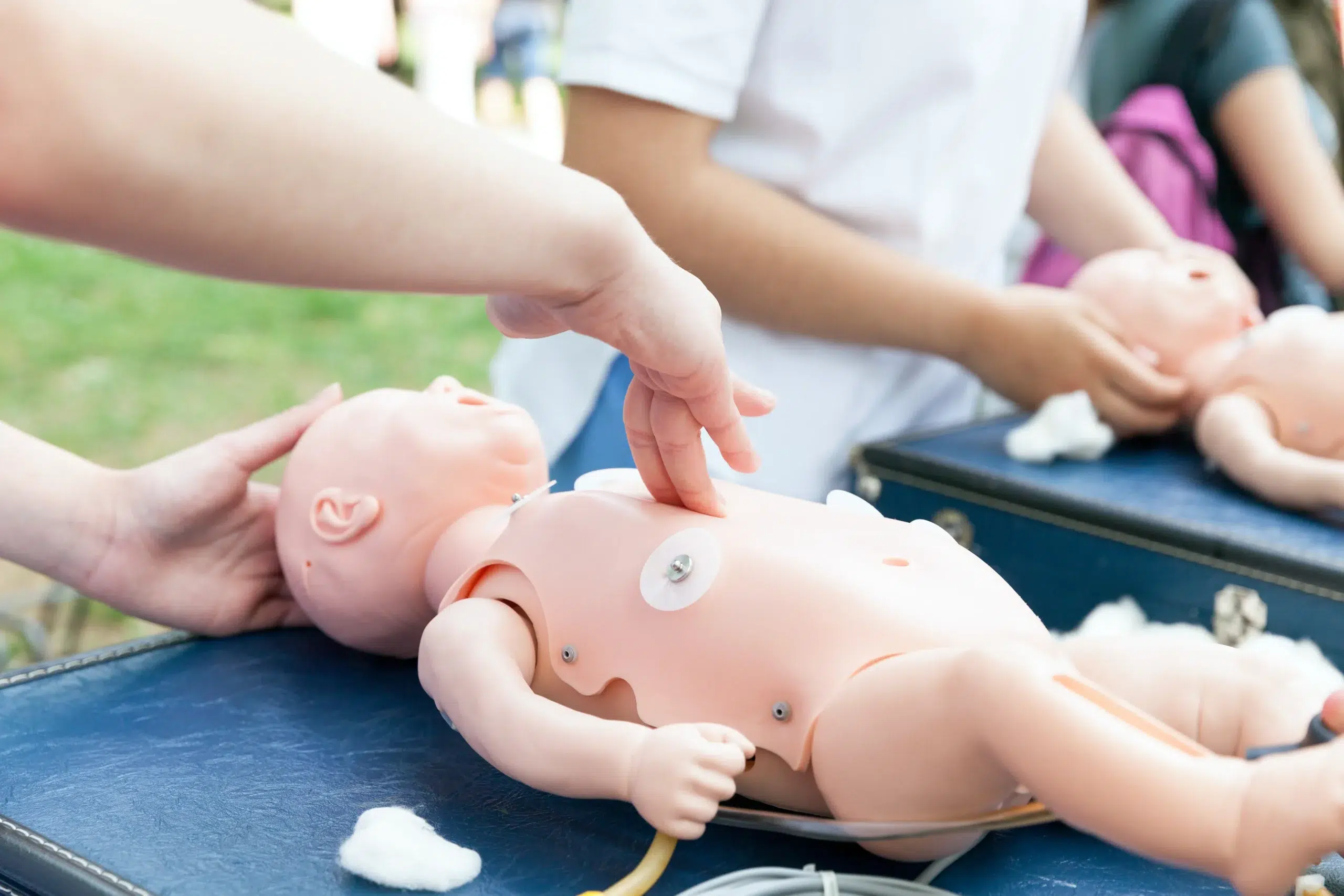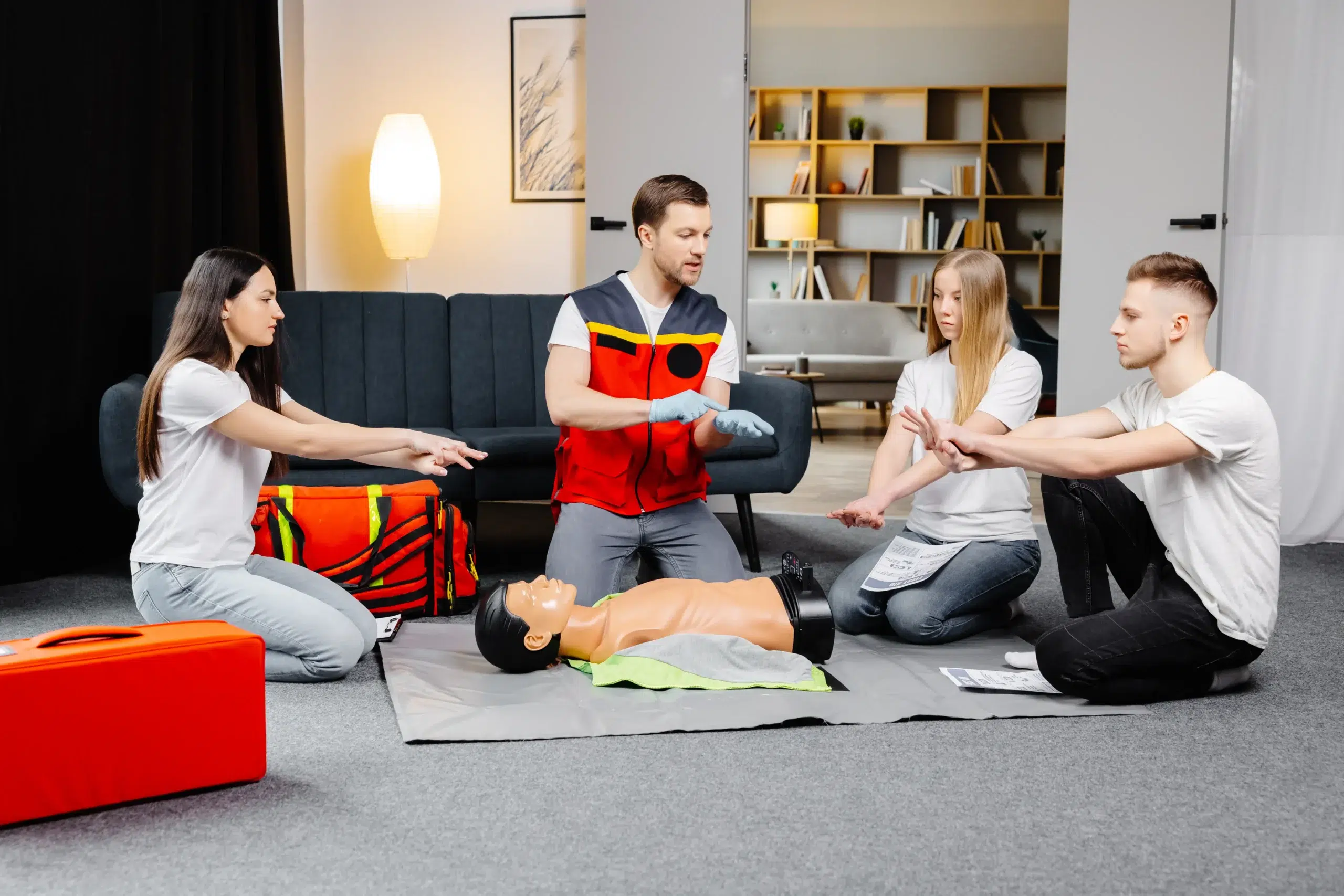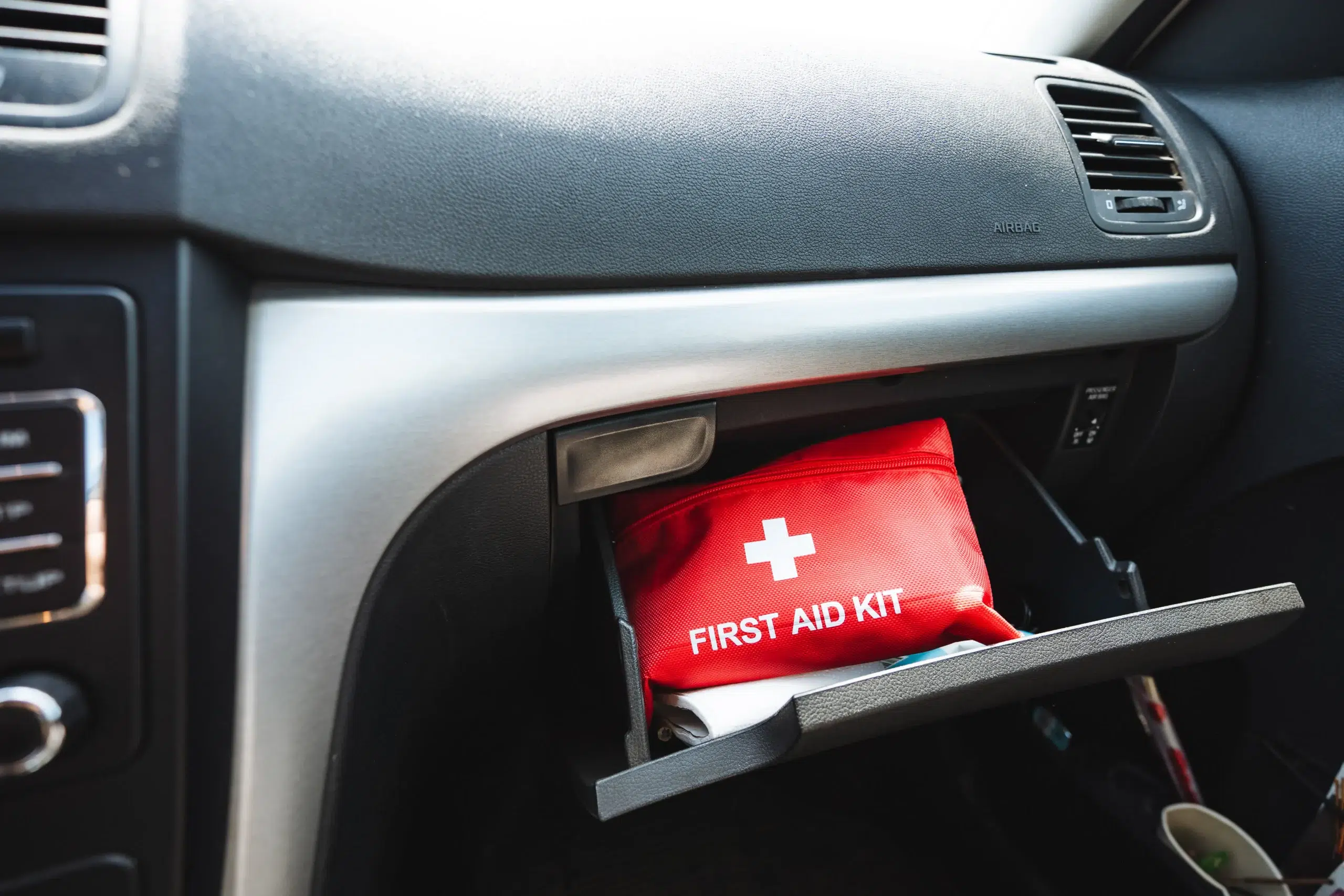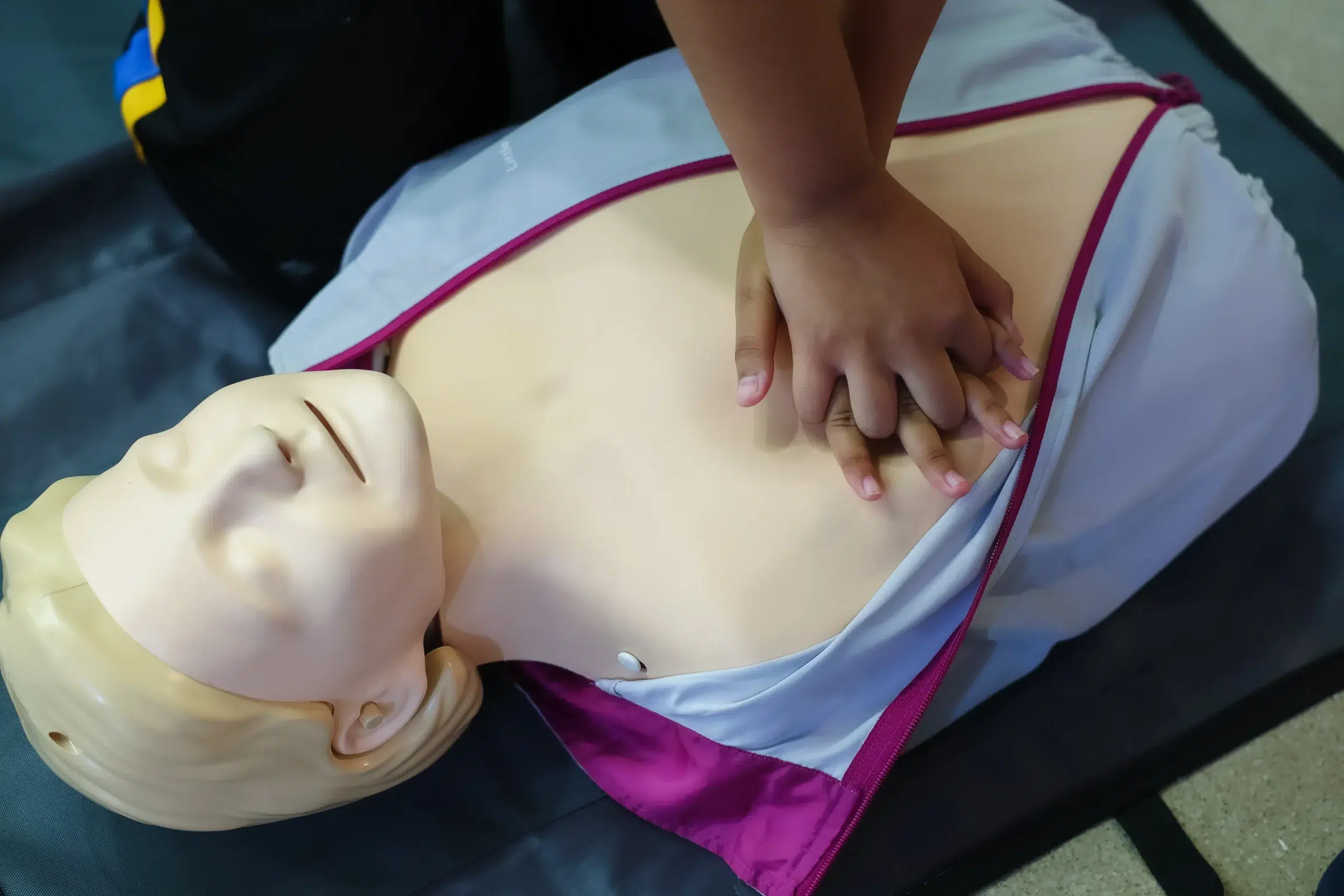Empowering yourself with life-saving skills is one of the most valuable things you can do, both for yourself and your community. CPR training provides the knowledge and confidence to respond effectively during medical emergencies, making you a vital link in the chain of survival. This article will demystify CPR training, addressing common misconceptions and highlighting the real benefits. We’ll also guide you through finding the right CPR courses near me, whether you’re looking for basic CPR and First Aid or specialized certifications like BLS, ACLS, or PALS. We’ll explore different learning formats, including online, in-person, and blended learning options like the RQI program, to help you find the perfect fit.
Key Takeaways
- CPR skills save lives: From basic to advanced certifications, CPR training equips you with the confidence to act quickly and effectively during medical emergencies.
- Choose the right CPR course: Consider your profession and learning style when selecting a course. Look for reputable providers offering AHA-aligned training like Roseville CPR Classes.
- Hands-on training builds confidence: Effective CPR training involves practicing techniques and receiving instructor feedback to ensure you’re prepared for real-world situations.
Why CPR Training Matters: Debunking Myths and Highlighting Benefits
CPR training empowers you to respond effectively during medical emergencies. From basic life support to advanced certifications like ACLS and PALS, these skills provide the confidence to act when seconds count. But several misconceptions surround CPR training—let’s clear them up and explore the real benefits.
What is CPR and why does it save lives?
CPR, or cardiopulmonary resuscitation, is a life-saving technique used when someone’s heart stops beating. It involves chest compressions and rescue breaths to circulate oxygenated blood to the brain and other vital organs. CPR can significantly increase the chances of survival until professional medical help arrives. Learning CPR equips you with the skills to handle emergencies and potentially save a life. For a comprehensive guide to CPR training, check out this helpful resource.
Common CPR Training Myths
Several myths discourage people from pursuing CPR training. Let’s debunk some of the most common:
- Myth 1: Chest compressions alone are enough. While chest compressions are crucial, combining them with rescue breaths (when appropriate) provides more effective oxygenation. Don’t let the fear of rib fractures prevent you from performing compressions—they are a critical part of CPR. For more information on CPR myths, see this article.
- Myth 2: CPR is only for medical professionals. Anyone can learn and benefit from CPR training. In fact, bystander CPR can dramatically improve outcomes before emergency responders arrive. Equipping yourself with these skills can make a real difference in your community. More CPR myths are debunked here.
- Myth 3: You could cause serious harm by performing CPR. While there’s a small risk of minor injuries like rib fractures, the potential benefits of CPR far outweigh the risks. The alternative—doing nothing—is far more dangerous. This article further clarifies common CPR misconceptions.
Benefits of CPR Training for You and Your Community
Learning CPR offers a range of benefits, both personal and communal:
- Increased confidence: CPR training equips you with the knowledge and skills to respond effectively in emergencies, boosting your confidence and reducing feelings of helplessness.
- Improved safety: Knowing CPR makes you a valuable asset in your community, workplace, and even at home. You’ll be prepared to assist family, friends, coworkers, or even strangers in need.
- Enhanced preparedness: CPR certification often includes training on recognizing the signs of cardiac arrest and other medical emergencies, allowing for quicker intervention and better outcomes.
- Community impact: Widespread CPR training creates a network of potential lifesavers, strengthening community resilience and improving overall public health. Find a CPR course in Roseville that fits your needs and become a vital link in the chain of survival. Roseville CPR classes offer training aligned with the latest American Heart Association guidelines, ensuring you receive high-quality instruction.
Finding the Right CPR Course Near You
So, you’ve decided to get CPR certified—fantastic! Knowing which course is right for you can feel a little overwhelming with so many options. This section breaks down everything you need to know to find the perfect fit.
Types of CPR Courses
CPR training isn’t one-size-fits-all. Different courses cater to various needs and professions. Basic CPR and First Aid certification provides fundamental lifesaving skills for anyone. More advanced courses, like BLS (Basic Life Support), ACLS (Advanced Cardiovascular Life Support), and PALS (Pediatric Advanced Life Support), are typically required for healthcare providers and those in specialized roles. Knowing the difference is the first step in choosing the right course.
How to Find Reputable CPR Training Providers
Choosing a reputable training provider is key to receiving high-quality instruction and a recognized certification. Look for providers affiliated with nationally recognized organizations like the American Heart Association (AHA). For example, Roseville CPR Classes partners with Safety Training Seminars, an AHA Training Center, ensuring adherence to the latest AHA guidelines. This partnership means your certification will be widely accepted and respected. For those seeking convenient, local training in the Roseville, Rocklin, and Sacramento areas, this offers a significant advantage.
Choosing the Right CPR Course: Factors to Consider
Several factors influence which CPR course is best for you. Consider your current or future profession—are you a healthcare professional, a childcare provider, or simply someone who wants to be prepared for emergencies? Also, think about your learning style. Do you prefer in-person, hands-on instruction or the flexibility of online learning? Finally, course fees can vary, so compare pricing and explore options like group discounts at Roseville CPR Classes to find a course that fits your budget. Check if your employer offers CPR training, as they sometimes cover the cost.
Popular CPR Course Providers
Several organizations offer CPR training, each with its own strengths. Here’s a quick overview:
American Heart Association (AHA)
The AHA is a leading authority in CPR training and certification. They offer a wide range of courses, from basic CPR to advanced certifications like BLS, ACLS, and PALS. Many training centers and healthcare facilities offer AHA-certified courses.
American Red Cross
The American Red Cross is another well-respected provider of CPR training. They offer various courses, including CPR, First Aid, and specialized certifications, often available through community centers and hospitals.
Roseville CPR Classes
Roseville CPR Classes focuses on providing high-quality, AHA-certified training in a convenient and supportive learning environment. They offer various courses, including BLS, ACLS, PALS, and CPR/First Aid, specifically serving the Roseville, Rocklin, and Sacramento communities.
National Safety Council (NSC)
The NSC offers a range of safety training programs, including CPR and First Aid certification. They often partner with local training centers to deliver their courses, making them accessible across the country.
ProTrainings
ProTrainings primarily offers online CPR and First Aid certification courses. This can be a good option for those seeking a flexible and self-paced learning experience, particularly if in-person classes are difficult to attend.
What to Expect During CPR Training
So, you’ve decided to take a CPR class—great! Whether you’re getting certified for work, personal enrichment, or to feel prepared for emergencies, here’s what you can expect. CPR courses cover essential, life-saving techniques, from the basics to more advanced certifications like Basic Life Support (BLS) and Advanced Cardiovascular Life Support (ACLS).
CPR Course Content and Duration
CPR training typically includes adult, child, and infant CPR, how to use an automated external defibrillator (AED), and basic first aid. You’ll learn to recognize the signs of a heart attack and stroke, practice giving chest compressions and rescue breaths, and how to clear an obstructed airway. High-quality CPR training adheres to the latest American Heart Association guidelines, so rest assured, you’re learning the most up-to-date techniques. Course duration varies depending on the certification. A basic CPR course might take a few hours, while a BLS course for healthcare providers is more comprehensive.
Hands-on Practice and Skill Assessment
CPR training isn’t just lectures and videos. You’ll get plenty of hands-on practice with a CPR training manikin. This helps you get comfortable with the techniques and develop the muscle memory needed to perform CPR effectively. In a hands-on class, you’ll learn exactly where and how hard to press for effective chest compressions. Some programs, like the RQI program offered through Safety Training Seminars, allow you to complete some coursework online and then attend an in-person skills session. This blended learning approach offers flexibility while still ensuring you get essential hands-on training. Your instructor will assess your skills throughout the course to ensure you’re meeting the required standards.
CPR Certification: Process and Validity
After successfully completing the course and skills assessment, you’ll receive your CPR certification. Most certifications are valid for two years, after which you’ll need a renewal course to stay current.
CPR Training Costs & Discounts
CPR training costs vary depending on the course type, location, and training provider. Roseville CPR Classes offers a low-price guarantee and discounts for group training, making it a cost-effective option for teams. Compare prices and check for discounts before enrolling.
CPR Training for Different Needs
CPR training isn’t a one-size-fits-all solution. Different professions and circumstances require specific types of CPR certification. Let’s explore some tailored CPR training options:
CPR Courses for Healthcare Professionals
Healthcare providers, including doctors, nurses, and EMTs, need advanced life support skills. Roseville CPR Classes offers courses like BLS, ACLS, and PALS, in addition to standard CPR and First Aid. Their affiliation with Safety Training Seminars, an American Heart Association Training Center, ensures high-quality instruction and certification—essential for medical professionals. This alignment guarantees training that reflects the latest emergency cardiovascular care guidelines.
CPR Training for Parents and Caregivers
Knowing CPR can be invaluable for parents, grandparents, babysitters, and anyone caring for children. While a general CPR course offers a solid foundation, prioritize courses covering infant and child CPR techniques. Choosing an AHA-certified training provider like Roseville CPR Classes, partnered with Safety Training Seminars, ensures excellent instruction and a recognized certification, giving you the confidence to handle emergencies involving young children.
Workplace CPR Programs
Many workplaces encourage or require CPR certification for their employees, particularly in environments like schools, gyms, and construction sites. Roseville CPR Classes provides discounts for group training, making it a budget-friendly way to prepare your team. Equipping your staff with these skills fosters a safer workplace and shows your commitment to their well-being.
Online vs. In-Person CPR Training
The choice between online and in-person CPR training depends on your learning style and availability. Online courses offer flexibility, letting you learn at your own speed. However, in-person training offers essential hands-on practice and direct feedback from instructors. Blended learning programs like RQI, available through providers like Roseville CPR Classes and Safety Training Seminars, combine the advantages of both formats. You complete the coursework online and then attend an in-person skills session for practical application and assessment.
Related Articles
- CPR Myths Busted: What Really Works
- Why CPR is Essential in Healthcare
- CPR Certification in Roseville: Your Guide – Roseville CPR Classes
- CPR Courses in Rocklin: What You Need to Know – Roseville CPR Classes
- Online PALS Classes in Rocklin: A Complete Guide – Roseville CPR Classes
Frequently Asked Questions
How often do I need to renew my CPR certification? CPR certifications are typically valid for two years. Renewal courses ensure your skills and knowledge remain up-to-date with the latest guidelines.
What’s the difference between CPR and First Aid training? CPR focuses on life-saving techniques for someone whose heart has stopped beating. First Aid covers a broader range of injuries and illnesses, from minor cuts and burns to more serious situations. Many courses combine both CPR and First Aid training.
Which type of CPR course is right for me? The best course depends on your individual needs. A basic CPR/First Aid course is suitable for most people. Healthcare professionals typically require advanced certifications like BLS, ACLS, or PALS. Consider your profession, personal goals, and learning preferences when choosing a course.
What if I’m nervous about performing CPR in a real emergency? It’s natural to feel apprehensive, but CPR training builds confidence. Hands-on practice during the course helps develop muscle memory and reduces hesitation. Remember, any attempt at CPR is better than none.
How can I find CPR classes near me? Searching online for “CPR classes near me” is a good starting point. Check local community centers, hospitals, and organizations like the American Heart Association and American Red Cross. Roseville CPR Classes offers convenient training options for those in the Roseville, Rocklin, and Sacramento areas.


